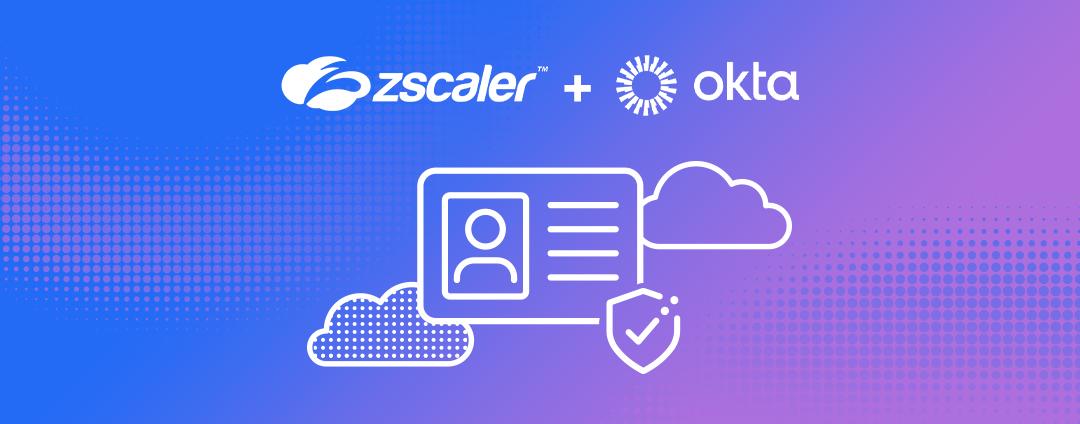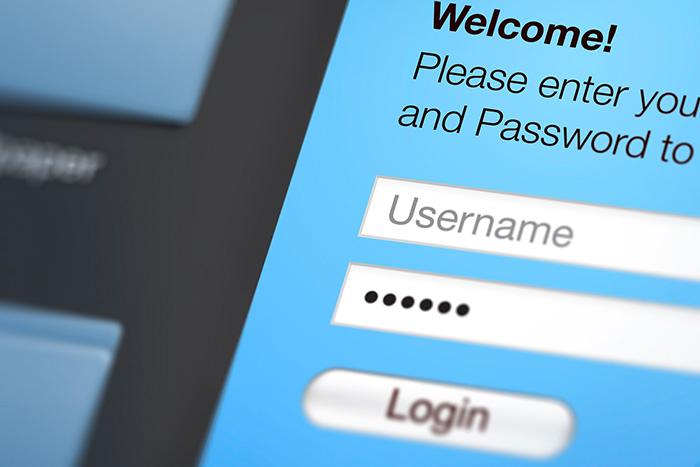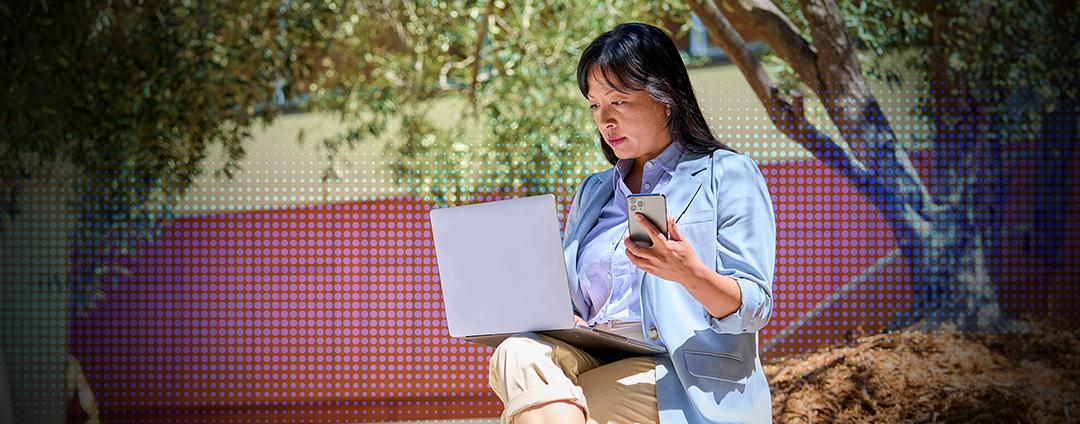Zscaler Blog
Get the latest Zscaler blog updates in your inbox
How Multifactor Authentication Strengthens Remote Access Security
Understanding Multifactor Authentication
Multifactor authentication (MFA) is a critical layer of defense in remote access security, requiring users to verify their identity through multiple methods in addition to passwords—like biometrics, or one-time codes. By combining factors, MFA reduces reliance on passwords alone, mitigating the risks of phishing, credential theft, and unauthorized access in distributed work environments.
The shift to widespread remote work, accelerated by the events of 2020, has fundamentally reshaped how businesses operate—and how they approach security. With employees accessing corporate networks from an array of devices and locations, the attack surface has expanded dramatically. Cybercriminals have seized on this opportunity, launching increasingly sophisticated phishing attacks, credential theft schemes, and brute-force attempts to compromise remote access systems. In this environment, relying on passwords alone is no longer sufficient. Organizations need robust mechanisms to verify user identities, and that’s where multifactor authentication (MFA) plays a critical role.
MFA enhances security by requiring users to authenticate their identity through multiple verification factors, such as something they know (e.g., a password), something they have (e.g., a smartphone or security token), or something they are (e.g., a fingerprint or facial recognition). By layering these checks, MFA makes it significantly more difficult for attackers to gain unauthorized access, even if one factor—such as a password—is compromised. For remote access, this means ensuring that only legitimate users, who can prove their identity using multiple factors, are granted entry to sensitive systems and data.
As a cornerstone of secure remote access, MFA aligns seamlessly with the principles of a zero trust security model. By requiring continuous verification of identity and integrating contextual factors—such as location, device health, and user behavior—organizations can enforce granular access policies that minimize risks. The result is a stronger defense against unauthorized access, compromised credentials, and insider threats, helping businesses navigate the challenges of a remote-first world with confidence.
The Need for Secure Remote Access in Modern Workplaces
The 2024 Verizon Data Breach Investigations Report (DBIR) underscores a stark reality: use of stolen credentials remains the most common cause of data breaches, accounting for over 24% of hacking-related incidents. Attackers often exploit weak, reused, or stolen passwords to infiltrate systems, bypassing traditional perimeter defenses with alarming ease. This highlights a critical vulnerability in how organizations protect access to sensitive resources—one that becomes even more pronounced in today’s increasingly remote and hybrid work environments.
The rise of remote and hybrid workforces has fundamentally reshaped the security landscape, effectively dissolving the traditional network perimeter. Employees now access corporate systems from a diverse array of devices, networks, and locations, creating an expanded attack surface for adversaries to exploit. Whether logging in from a home office, a coworking space, or a coffee shop, these decentralized access points introduce a new level of complexity for IT teams tasked with safeguarding sensitive data and applications. This shift demands a reimagined approach to access security, one that places identity at the core of defense.
Remote access inherently introduces new attack vectors, making it a prime target for phishing, credential stuffing, and session hijacking attacks. When paired with the growing sophistication of adversaries and the proliferation of malware capable of intercepting credentials, relying solely on passwords is no longer sufficient. Organizations must implement robust, layered protections that verify not only who is accessing the system, but also contextual factors such as where, when, and how access is being attempted. By embracing identity-centric strategies and technologies designed to adapt to evolving threats, businesses can ensure that remote access remains both seamless and secure.
How Multifactor Authentication Works
The strength of MFA lies in layering multiple independent factors to validate a user’s identity. By requiring more than just a single piece of information, MFA significantly reduces the risk of unauthorized access.
Here’s how it works:
Something you know (Knowledge factor): This is typically a password, PIN, or security question. It’s the most familiar form of authentication but also the most vulnerable to phishing, brute force, and credential-stuffing attacks.
Something you have (Possession factor): This could be a smartphone, hardware token, or one-time code generated by an app. It introduces a physical component that’s harder for attackers to steal remotely.
Something you are (Inherence factor): This includes biometric factors like fingerprint scans, facial recognition, or voice authentication. These are unique to the individual and difficult to replicate.
By combining two or more of these factors, MFA makes it exponentially harder for attackers to compromise an account, as they would need to defeat multiple independent layers of security.
Why MFA Is More Secure Than Password-Only Methods
Passwords alone are notoriously weak, no matter how complex they are. They can be stolen through phishing, guessed with brute-force tools, or leaked in data breaches. Once compromised, a password provides attackers with direct access to your accounts and systems. MFA mitigates this by requiring an additional layer of proof beyond just the password. Even if a bad actor obtains your password, they would also need access to your second factor—whether it’s your smartphone, a hardware token, or your biometric data. This additional step creates a substantial barrier for attackers and significantly lowers the chances of unauthorized access.
Comparing MFA Methods
From SMS to Hardware Tokens There are many ways to implement MFA, each with its own pros and cons:
SMS codes: One-time passcodes sent via text message are widely used due to their simplicity and accessibility. However, they are vulnerable to SIM-swapping attacks and interception, which makes them less secure for high-risk environments.
Email codes: Similar to SMS, email-based codes are easy to deploy and require no additional devices. However, they rely on the security of the user’s email account, which itself could be compromised.
Authenticator apps: Apps like Google Authenticator or Microsoft Authenticator generate time-based one-time codes (TOTP) on a user’s smartphone. These are more secure than SMS because they don’t rely on external communication channels, but they require users to have their phone available and can be challenging to recover if the device is lost.
Hardware tokens: Physical devices like YubiKeys provide the highest level of security by generating unique codes,enabling cryptographic authentication or using FIDO2 (Fast IDentity Online 2) standards. They are immune to phishing and remote attacks, but they can be expensive to deploy at scale and inconvenient if lost or misplaced.
Passwordless MFA with FIDO2 Passkeys: Passkeys eliminate the need for passwords by using biometrics or cryptographic authentication tied to a user’s device. They improve security by resisting phishing and password attacks while offering a seamless user experience. However, they require modern device ecosystems and may have higher initial implementation costs.
Each method comes with trade-offs in terms of security, usability, and cost. For organizations implementing a zero trust strategy, it’s important to weigh these factors and tailor MFA solutions to meet both security and user experience goals.
Benefits of MFA for Remote Access Security
Multifactor authentication is a cornerstone of modern cybersecurity, particularly for securing remote access. By requiring users to verify their identity through multiple factors—something they know, something they have, or something they are—MFA significantly raises the bar for attackers. Below, we explore how MFA mitigates phishing risks, aligns with regulatory requirements, and delivers real-world results for industries managing sensitive data.
Mitigating Common Phishing Tactics
Phishing remains one of the most pervasive threats to remote access security. Cybercriminals have become increasingly sophisticated, using deceptive emails, readily available phishing kits, cloned login portals, and social engineering to steal user credentials. However, MFA dramatically reduces the effectiveness of these tactics. For example, even if a phishing attack successfully tricks a user into revealing their password, an attacker still lacks the second factor—such as a dynamically generated code from an authenticator app or biometric verification—to gain access.
Consider the 2022 case of a healthcare organization targeted by a phishing campaign attempting to breach their remote access system. Employees’ credentials were harvested through a fraudulent email campaign, but the attack was ultimately thwarted because their MFA system required biometric authentication. Without access to users' fingerprints or facial scans, the attackers were blocked from pivoting further into the network. This real-world example highlights how MFA neutralizes credential theft, ensuring that compromised passwords alone are not enough for adversaries to succeed.
Supporting Regulatory Compliance
Beyond improving security, MFA plays a critical role in helping organizations meet regulatory requirements. Laws like the General Data Protection Regulation (GDPR) in Europe and the Health Insurance Portability and Accountability Act (HIPAA) in the United States impose strict standards for safeguarding sensitive data. Both regulations emphasize the importance of access controls to prevent unauthorized access to personal and health-related information.
For example, GDPR requires organizations to implement “appropriate technical and organizational measures” to secure personal data. MFA aligns with this mandate by providing strong authentication mechanisms that limit access to authorized personnel only. Similarly, HIPAA mandates the use of safeguards to protect electronic protected health information (ePHI). MFA satisfies this requirement by introducing an additional layer of security that reduces the risk of a data breach, particularly in remote work environments where endpoint security is often harder to enforce.
Real-World Compliance and Security in Action
Take the example of a financial services firm operating in a highly regulated environment. This firm, managing sensitive client data, implemented MFA not only to protect against breaches but also to demonstrate compliance with regulations like the Payment Card Industry Data Security Standard (PCI DSS). During a routine audit, the firm was able to show how MFA restricted access to its payment processing systems, ensuring only authorized users with verified identities could log in.
The benefits extended beyond compliance. Shortly after deployment, the organization thwarted a brute force attack targeting employee credentials. Even though attackers managed to guess several weak passwords, the MFA system required a second authentication step—such as a push notification to employees’ registered devices—which the attackers could not bypass. This implementation not only satisfied auditors but also enhanced the company’s overall security posture.
A Crucial Pillar of Zero Trust
For organizations embracing zero trust principles, MFA is indispensable. Remote work environments, where users access systems from diverse locations and devices, demand identity-centric solutions. MFA ensures that every access request is verified rigorously, reducing the risk of unauthorized intrusion and aligning with the broader zero trust strategy of “never trust, always verify.”
By mitigating phishing risks, supporting compliance with regulatory frameworks, and delivering proven results in real-world scenarios, MFA strengthens remote access security in a way that is both proactive and reliable. For businesses navigating the complexities of remote work and evolving cyberthreats, MFA serves as a critical line of defense.
Implementing MFA: Best Practices and Considerations
Not all authentication events should be treated equally. Adaptive authentication, a cornerstone of modern MFA, uses contextual data—such as the user’s location, device type, or behavior—to determine if additional verification steps are needed. For instance, a user accessing a company portal from a trusted device in their usual location may only need a single MFA prompt. However, if the same user suddenly logs in from an unfamiliar country or attempts to access highly sensitive data, the system can require additional layers, such as biometric verification or a OTP. This layered approach ensures that security is dynamically tailored to the risk level, protecting critical assets without introducing unnecessary friction for routine tasks.
A common challenge when implementing MFA is finding the right balance between robust security and seamless user experience. Integrating MFA with single sign-on (SSO) is one way to achieve this harmony. With SSO, users authenticate once and gain secure access to multiple applications, reducing the need for repeated logins while maintaining strong security. By combining SSO with MFA, organizations can streamline workflows without compromising on identity protection. This approach not only enhances productivity but also curtails the frustration associated with frequent authentication prompts, increasing adoption rates across the organization.
Context-aware authentication can further strengthen MFA by incorporating device and contextual intelligence. For example, verifying whether the device being used has the latest security patches or is enrolled in a corporate device management system can inform whether additional verification is needed. Similarly, context like time of day or anomalous behavior—such as a user attempting to download large amounts of data—can trigger stricter authentication requirements. By leveraging these insights, organizations can make authentication smarter and more responsive, ensuring security measures are proportional to the level of threat.
Google’s successful adoption of MFA showcases how organizations can implement strong authentication with minimal user disruption. By rolling out security keys and push-based authentication for employees, Google achieved a near-zero phishing success rate while maintaining productivity. Key to their success was a user-centric approach: they prioritized simplicity, ensuring that MFA methods were intuitive and quick to use. Organizations aiming to replicate this success should focus on providing clear guidance, leveraging user-friendly tools like mobile authenticator apps, and gradually rolling out MFA to avoid overwhelming their workforce. This incremental, well-planned implementation can make MFA adoption both effective and painless.
Future Trends in MFA and Remote Access Security
The future of multifactor authentication (MFA) is being shaped by cutting-edge biometric solutions and adaptive authentication methods that analyze user behavior. Biometric technologies, such as facial recognition, voice patterns, and fingerprint scanning, are becoming increasingly sophisticated, offering seamless and secure alternatives to traditional methods. Adaptive authentication takes security a step further by leveraging machine learning to evaluate user behavior in real-time—such as typing speed, device location, or login time—to detect anomalies and flag potentially malicious access attempts without interrupting legitimate users. Together, these advancements ensure that MFA evolves alongside the dynamic threats targeting remote access systems.
Artificial intelligence (AI) is also revolutionizing risk assessment and context-based authentication. By continuously analyzing data such as device health, geographic location, and network activity, AI models can dynamically adjust authentication requirements based on the perceived risk of each access attempt. For instance, a login attempt from an unfamiliar device in an unusual location might prompt additional verification steps, while routine logins from trusted devices can proceed seamlessly. This AI-driven approach not only fortifies security but also minimizes friction for end users, enabling organizations to strike the right balance between usability and protection in their remote access strategies.
Zscaler, Multifactor Authentication, and Secure Remote Access
At the core of Zscaler's approach to secure remote access is its Zero Trust Exchange™, an AI-powered platform that redefines how organizations protect their users, applications, and data. By integrating MFA with zero trust principles, Zscaler ensures that access is only granted to verified users and devices, minimizing the attack surface and eliminating the risks associated with traditional VPNs and perimeter-based security. With Zscaler, organizations can provide seamless, secure remote access to employees, partners, and contractors—without compromising performance or user experience.
- Zero trust architecture: Zscaler enforces least-privileged access by verifying identities, assessing risk in real time, and brokering secure, direct connections between users and applications.
- Seamless MFA Integration: The platform works with leading identity providers to enable MFA, adding an extra layer of security to validate users and devices before granting access.
- Eliminates VPN vulnerabilities: Zscaler replaces outdated VPNs with direct, secure access to apps, ensuring attackers can't exploit network entry points or move laterally.
- AI-powered risk assessment: Leveraging over 500 trillion daily signals, Zscaler continuously monitors and evaluates user behavior, device posture, and access requests to detect and block malicious activity.
Through our strategic partnership with Okta, Zscaler enhances its identity-first approach by integrating Okta’s industry-leading identity and access management capabilities. This partnership strengthens Zscaler’s position as a zero trust leader by enabling seamless provisioning, adaptive authentication, and real-time user identity verification, ensuring only authorized users gain access to critical resources.
By combining MFA with the Zero Trust Exchange, Zscaler empowers organizations to embrace secure remote work and cloud transformation with confidence. It’s time to replace legacy security models with a solution that delivers true zero trust and protects your business from today’s evolving threats.
Was this post useful?
Disclaimer: This blog post has been created by Zscaler for informational purposes only and is provided "as is" without any guarantees of accuracy, completeness or reliability. Zscaler assumes no responsibility for any errors or omissions or for any actions taken based on the information provided. Any third-party websites or resources linked in this blog post are provided for convenience only, and Zscaler is not responsible for their content or practices. All content is subject to change without notice. By accessing this blog, you agree to these terms and acknowledge your sole responsibility to verify and use the information as appropriate for your needs.
Get the latest Zscaler blog updates in your inbox
By submitting the form, you are agreeing to our privacy policy.



